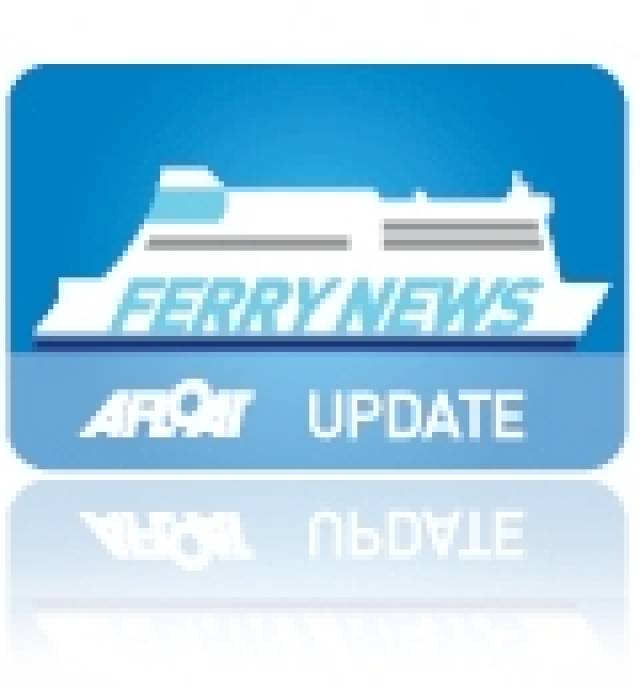#FastFerryPurchase – Channel Islands ferry operator, Condor Ferries which celebrates its 50th anniversary this year, has today announced acquisition of an Austal 102m state of the art 1,100 passenger / 250 car fast-ferry trimaran to enter service in Spring 2015, writes Jehan Ashmore.
Condor Ferries purchase of the Australian built fast-ferry which was built speculatively by Austal, is to secure the future of high-speed services between the UK and Channel Islands.
Austal based in Hendersen (Perth), Western Australia, also completed Irish Ferries Dublin-Holyhead fast-ferry, Jonathan Swift back in 1999.
Condor's new 35 knot MTU powered fast-ferry is to run services between the mainland Dorset port of Poole and the islands and compliments services also from Weymouth served by a pair of 86m fast-ferry craft built by rivals, InCAT based in Hobart, Tasmania.
James Fulford, CEO of Condor Ferries commented "I am delighted to announce that we are now proud owners of the Austal 102. This represents £50m of investment in our Islands and it will enable us to improve reliability, increase capacity, and give our guests a much greater level of comfort".
The good news follows a spate of negative publicity for the operator during the busy high-season. Last month their ro-pax ferry Commodore Clipper had an incident (making contact with the seabed) off Guernsey and which required the 500 passenger vessel to dry-dock at A&P Falmouth.
Progress to repair damage to the 14,000 tonnes ferry Commodore Clipper have been better than expected as work is now completed and she is to return to service earlier than scheduled this weekend on Portsmouth routes to St. Peter Port, Guernsey and St. Helier on Jersey.
During the absence of Commodore Clipper, the only conventional ferry serving the islands, Condor were forced to charter in a pair of vessels, albeit freight-only vessels, MN Toucan and Arrow to compliment their fast-ferry operations serving to and from Poole and Weymouth.
As previously reported on Afloat.ie, the Arrow, which too is on charter from Seatruck Ferries to the Isle of Man Steam Packet, had the misfortune of also getting into difficulties arising from a fault of the system controlling one of her propellers when sailing to Guernsey. Disruption to the Arrow was resolved within 24 hours of the fault occuring having undergone repairs carried out in Portsmouth.
Guernsey headquartered Condor Ferries also run a third InCAT built 86m ferry craft that links the islands to St. Malo, France. The Breton port is also where their ro-ro freight-ferry, Commodore Goodwill provides another lifeline bringing goods to and from the islands and also connecting the UK.































































